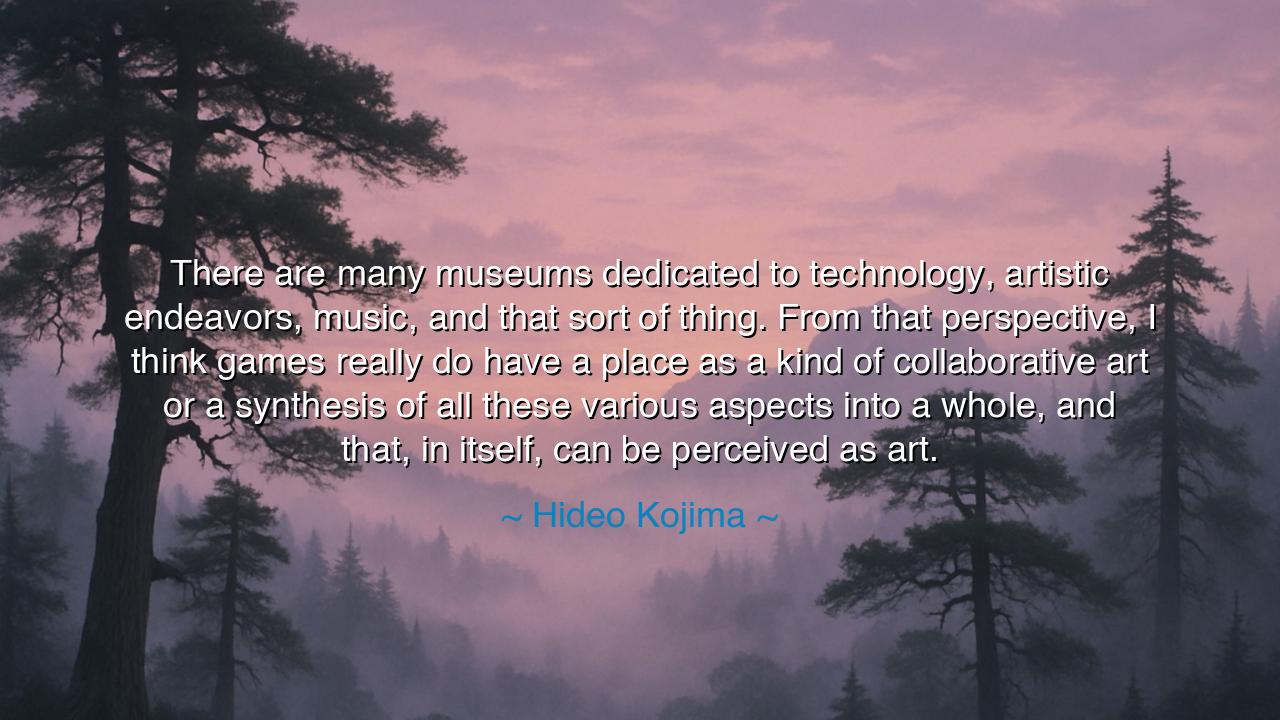
There are many museums dedicated to technology, artistic
There are many museums dedicated to technology, artistic endeavors, music, and that sort of thing. From that perspective, I think games really do have a place as a kind of collaborative art or a synthesis of all these various aspects into a whole, and that, in itself, can be perceived as art.






The visionary Hideo Kojima, master craftsman of modern storytelling, once revealed his conviction with these words: “There are many museums dedicated to technology, artistic endeavors, music, and that sort of thing. From that perspective, I think games really do have a place as a kind of collaborative art or a synthesis of all these various aspects into a whole, and that, in itself, can be perceived as art.” His declaration is not merely about entertainment, but about the nature of art itself—what it is, where it resides, and how it evolves with humanity’s imagination.
In this truth, Kojima speaks of games as more than pastime or diversion. He names them as vessels of collaborative art, for within them lie music, painting, architecture, literature, theater, and technology, fused together into a single living form. Just as the ancients wove together poetry and performance into the tragedies of Greece, so too do games unite many arts into one. They are cathedrals of the digital age, built not of stone but of code, sound, image, and imagination.
To call games a synthesis of various aspects is to recognize their unique nature. In a painting, one sees the vision of the artist; in music, one hears the spirit of sound; in literature, one enters the realm of words. But in games, all these forms meet, not as fragments but as a tapestry. The player becomes both audience and participant, both witness and actor. This fusion makes games a mirror unlike any other, reflecting not just the creator’s vision, but also the choices of those who enter its world.
History offers us parallels. In the Middle Ages, the great cathedrals were not built by architects alone, but by the labor of stonemasons, the vision of sculptors, the skill of glassmakers, and the devotion of countless hands. These structures were collaborative works, greater than any one artist, embodying a people’s faith and imagination. So too are games—born of teams of writers, designers, programmers, composers, and artists, united to forge a single living work. Like the cathedrals, they rise as testaments to human collaboration.
Kojima’s words also carry defiance, for many in the world dismiss games as trivial or shallow. But he insists that they can indeed be perceived as art, because art is not bound by medium but by intent. If art is that which awakens thought, stirs emotion, or captures truth, then games, at their best, accomplish all three. A well-crafted game can move a player to tears, ignite courage, or stir philosophical reflection as deeply as a novel or a symphony. It is not the form that defines art, but the power it wields over the human soul.
The lesson for us is to broaden our vision of art. Do not confine it to galleries or stages, but see it wherever creativity, discipline, and imagination unite. See art in games, in film, in architecture, in inventions that blend beauty with function. And above all, recognize that art is not only the product of one, but often the collaboration of many, each contributing their gifts to a shared creation.
Practically, this means: when you play, do not only seek escape—seek meaning. Look at the music, the story, the world, and ask what it reveals of human experience. When you create, do not isolate yourself—seek allies, for collaboration multiplies creativity. And when you judge what is “art,” do not cling to the past alone, but open your heart to the new, for art evolves as humanity itself evolves.
So let Kojima’s wisdom endure: games are not mere diversions, but a synthesis of arts, a collaboration of spirits, a living form of expression. Just as the ancients built temples and the Renaissance birthed masterpieces, so does our age weave its dreams into digital worlds. Honor them, study them, and let them inspire you—for in them, too, resides the eternal flame of human creativity.






AAdministratorAdministrator
Welcome, honored guests. Please leave a comment, we will respond soon